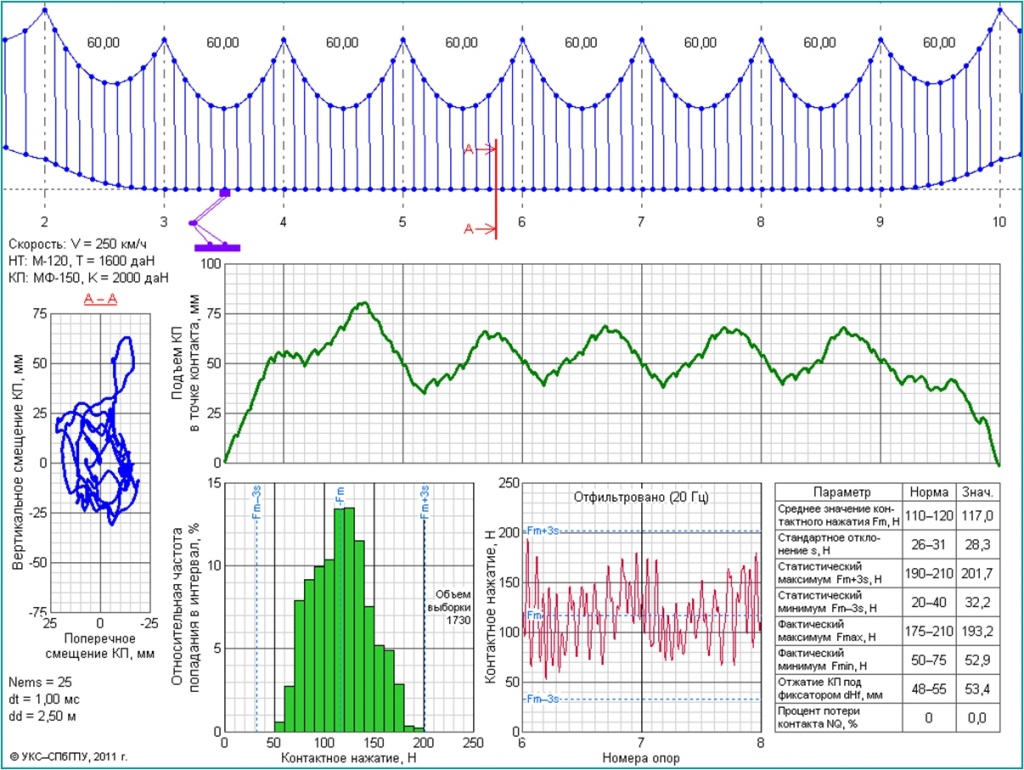
Creation of dynamic finite-element overhead catenary models. Modeling of the interaction process with electrical vehicle collecting pantograph
Increasing of the collecting pantograph and overhead system reliability and ensuring of current collection quality at specified velocities are the vital goals of the overhead system and collecting pantograph upgrade. Unbiased current collection estimation requires to determinate the following: contact pressure force, its average value, and statistic deviation value thereof. This can be achieved experimentally, though the railway test is an extremely expensive measure. That is the reason, why so much attention is paid to the elaboration of the mathematical models, allowing imitation of the process of dynamic interaction of the overhead catenary and collecting pantograph on the computer.

An overhead catenary is a complex distributed constant fluctuation system, while a collection pantograph is a complex relatively lumped constant fluctuation system. At higher velocities, the interaction process of these two systems depends on numerous construction peculiarities of connections thereof. Dynamic processes, occurring when the collecting pantograph slides along the overhead wire, are quite complicated and thus cannot be described using standard differential equations. Common experience shows that achieving of admissible dynamic model adequacy requires that the overhead catenary should be modeled using the FEM, while the collecting pantograph - using the multibody dynamic system.
UCS has developed some dynamic overhead catenary finite-element models and catenary-pantograph interaction models, and it continues to improve them. Such kind of modeling supposes complex mathematical problems solution, so UCS achieves that by collaboration with the Applied Mathematics Department at the Saint Petersburg State Polytechnical University (SPbSPU).
Copyright © 2004-2025 J.S.C. «UNIVERSAL CATENARY SYSTEMS» Developed by«Internet Promotion»
